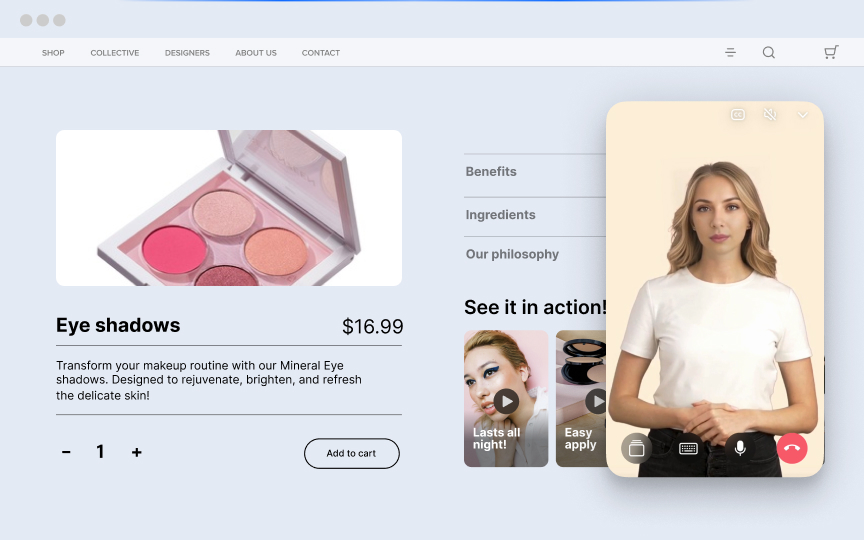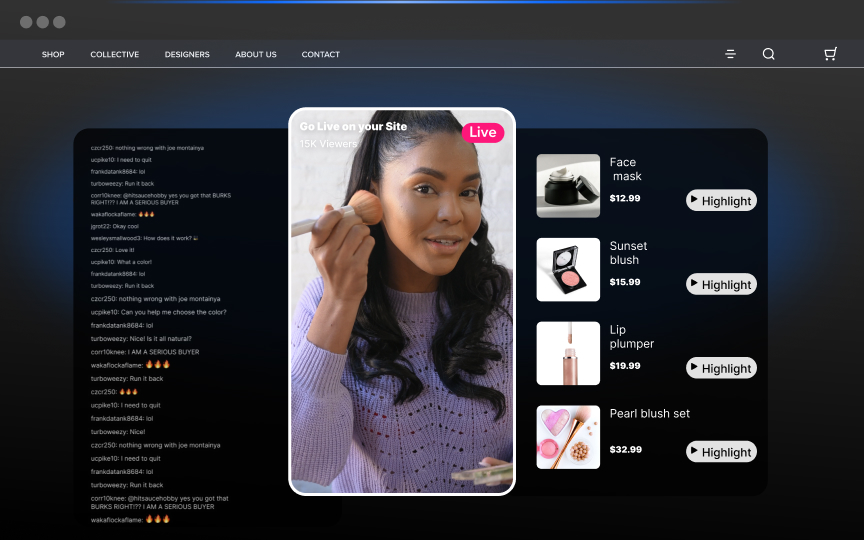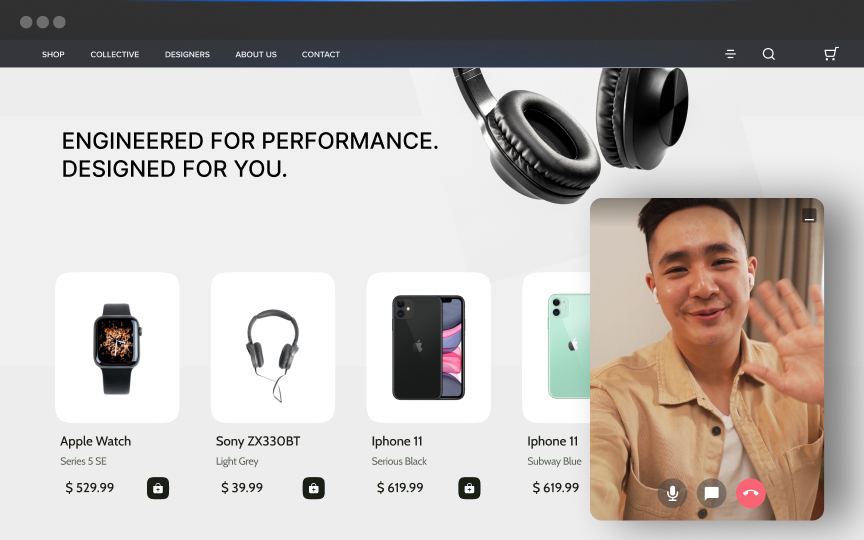By Drew Cashmore
A major industry shift in retail and commerce is happening right in front of our eyes.
Having spent a decade-and-a-half at the world’s biggest retailer, Walmart, my team and I experienced plenty of digital disruptions that pushed retail and eCommerce into new directions. Sometimes these were exciting shifts and opened up a new world of opportunities — and sometimes they had an adverse effect on the market or consumer behavior.
In hindsight, most of these changes were inevitable; none of the disruptions came out of the blue. But my takeaway from these experiences is that many leaders focus on ‘the now’ or ‘the buzzworthy’, and miss the underlying thing that is truly driving the seismic shift in the industry.
So let’s talk about that thing that is about to fundamentally disrupt commerce and the way in which it’s going to play out. And to do that, let’s start with the obvious.
Consumers are watching a lot of DTC video
Duh. Nearly everyone — 98% of North Americans between 18-24 — engage with online video content. This trend also extends to older generations, as 64% of people aged 65 and above also watch videos online.
The pandemic significantly contributed to this escalation in video consumption. As lockdowns and social distancing measures compelled people to depend more on their mobile devices — digital platforms and remote interactions became indispensable. This shift increased the average daily hours spent watching online videos to an impressive 1 hour and 40 minutes — and the average scroll distance to over 1 mile per day.
But it also compressed the amount of time that consumers spend on an individual piece of content. When you do the math, a user spends an average of 2 to 7 seconds on an individual piece of content when viewing it on TikTok or Instagram. Remember this number because it’ll be important later.
It’s not difficult to see that the future of the web is undoubtedly video-centric. And by default, that means that the future of commerce is video-centric as well.
Get ready for video at the center of commerce
As video consumption continues to rise, brands need to adapt their marketing strategies accordingly. Consumers increasingly rely on video platforms like TikTok, YouTube, and Instagram to research products and make informed purchasing decisions.
“In our studies, something like almost 40% of young people, when they’re looking for a place for lunch, they don’t go to Google Maps or Search…” revealed a Google executive recently citing their own data. “...they go to TikTok or Instagram.”
Last month, at my presentation at this year’s Shoptalk conference in Las Vegas, I started with this slide:

And it’s already started. Thirty percent of video views are on product or service-related content and 66% prefer video as the primary source of product-related information. When people want to buy something, video surpasses text, images, ratings and reviews, and social media as the dominant medium of influence.
Marketers are already starting to align with this new reality. This is not surprising, given the rise of video consumption and the fact that video content has been shown to increase conversion rates and foster customer loyalty. Brands that incorporate video into their marketing strategies are more likely to build trust with their audiences, as videos offer a more authentic, immersive, and engaging way to showcase products and demonstrate expertise.
But, their video strategy plays out predominantly on social sites because, to this point, the video was not built for commerce (too slow and clunky, not shoppable). And what we know about social sites is two-fold; they’re great places of influence but people don’t shop there at scale, you have to pay to reach your audience every time you want to talk to them.
And that leads to a flawed productivity loop because you have to pay for almost every transaction.
[video width="960" height="540" mp4="https://firework.com/wp-content/uploads/2023/04/DrewCashmore_Video.mp4"][/video]
Drew Cashmore shares "Reimagining the Future of Commerce" at Shoptalk 2023
Fostering a relationship with your audience where they shop
An estimated 30% of video views on the Internet happen on product or service-related content, but 89% of those product views happening on social media sites - where people are influenced but don’t shop - then you have two options as a retailer; continue to build your audiences in social media sites and pay every time you want to talk to them or build the experiences they’re looking for into your own site.
Immersive, interactive video about the product and services you sell, in the place where you sell them!
And here’s an interesting fact; when you take the same video from TikTok or Instagram and plop it on your site, the average view time goes from 2-7 seconds to 17 seconds - more than double. And when that video is live, the average watch time jumps to 12 minutes.
In the near term, your customers will continue to use those social sites to learn about your products and services - it’s a known behavior. But over time and with a consistent approach, the learned behavior of your customers shifts to favoring those video-based experiences on your website.
Moreover, the cost of entry is shrinking, making it even more attractive for marketers who may have once considered it too expensive. Today’s video consumers have been conditioned to appreciate real people recorded on smartphones, which means the overly produced, slick (and expensive) video legacy from decades of television is waning. They value authentic voices over high-paid spokespeople. Brands can lean on their best employees and customers for video messaging that cuts through the noise and feels personal and legitimate.
Start now — three years isn’t very far away
In today's rapidly evolving e-commerce landscape, brands must act quickly to embrace video as a core component of their marketing strategies. Those that fail to prepare a video strategy risk being left behind as consumers increasingly turn to video platforms for product research.
To capitalize on the video commerce trend, brands must invest in creating engaging video content that showcases their products and services, demonstrating their expertise and fostering trust with consumers. They should also explore opportunities to leverage live video to create interactive experiences which encourage customer engagement and brand loyalty.
In conclusion, the rise of video as a dominant medium in consumers' shopping journeys presents both challenges and opportunities for brands. By recognizing this shifting trend and adapting their strategies accordingly, brands can maximize their reach, boost sales, and create lasting connections with their audiences. The time to get on board with video commerce is now – those who hesitate may struggle to catch up in an increasingly video-centric e-commerce landscape.
[top_cta_with_form]
Unlock Exclusive Insights
By submitting this form, you agree to Firework's privacy policy and consent to receive personalized marketing communications. You can unsubscribe at any time.

































